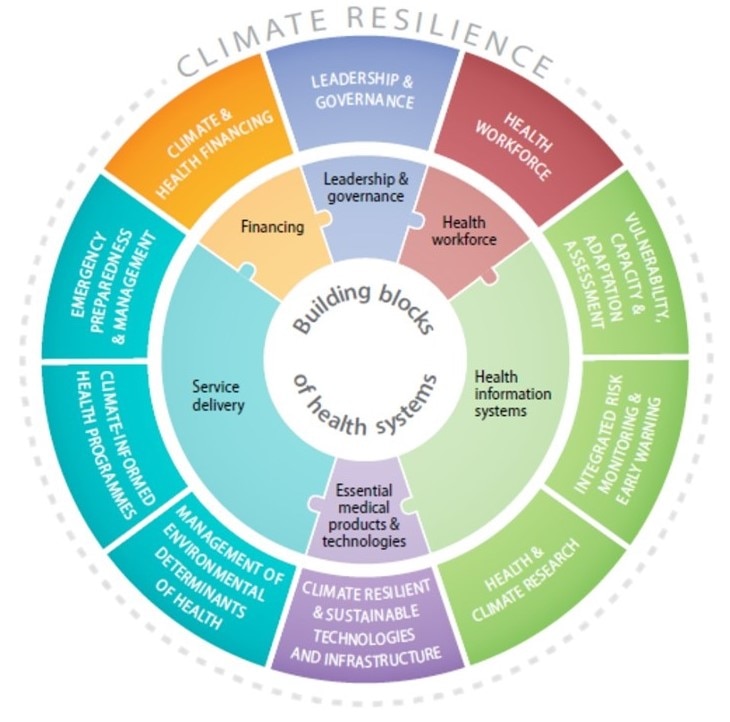Purpose:
On Earth Day 2022, the White House and HHS launched the Health Sector Climate Pledge, a voluntary commitment to climate resilience and emissions reduction, that includes a provision for signatories to “develop and release a climate resilience plan for continuous operations by the end of 2023, anticipating the needs of groups in their community that experience disproportionate risk of climate-related harm.”
The purpose of this document, “Climate Resilience Plan Elements for Healthcare Organizations,” is to describe at a high level the essential elements of a climate resilience plan for a healthcare facility or health system, and to help answer the question: How might climate resilience planning be different from, or augment, traditional emergency preparedness activities in healthcare? The pledge does not mandate reporting to the federal government, and this document does not represent a formal template. Rather, it offers general guidance for organizations that are unsure of how to approach this activity.
The Sustainable and Climate Resilient Healthcare Facilities Toolkit from HHS contains detailed information about how to develop a climate resilience plan.
Background:
As a result of climate-related disasters, healthcare organizations face risks of disruptions to care delivery and disproportionate health harms to their most vulnerable patients. Planning for climate resilience in healthcare aligns with an all-hazards approach to emergency preparedness. It builds on and complements hazard and vulnerability assessment and planning processes.
In the setting of climate change, health sector resilience requires consideration of prospective risks of climate-sensitive hazards, rather than relying exclusively on historical patterns for risk assessment. Healthcare organizations are important contributors to community climate resilience and are uniquely positioned to identify and protect the at-risk populations they serve. Climate resilience in healthcare includes addressing physical infrastructure vulnerabilities, anticipating community needs, and developing community partnerships to increase protection for at-risk populations. Therefore, it requires a multi-disciplinary approach from within the healthcare organization that includes the involvement of community partners.
In the World Health Organization’s Operational Framework for Building Climate Resilient Health Systems, a climate-resilient health system is defined as “one that is capable to anticipate, respond to, cope with, recover from, and adapt to climate-related shocks and stress, so as to bring sustained improvements in population health, despite an unstable climate.” While this framework primarily “aims to support national ministries of health and their partners to identify the key functions that need to be strengthened in order to provide a comprehensive public health response to climate change,” its elements are informative for articulating the components of a climate resilience plan for healthcare facilities:

